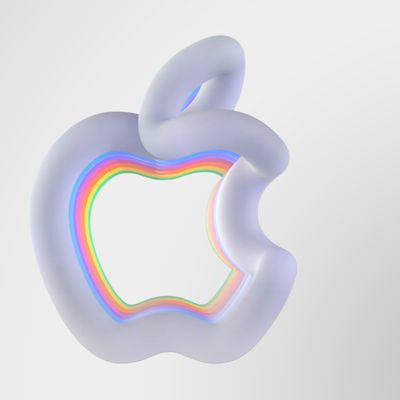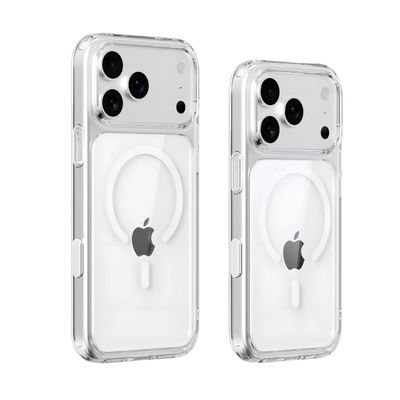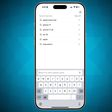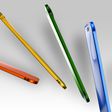Imagination Technologies Releases Details on Next-Generation GPU for iOS Devices
 Apple has long used Imagination Technologies' graphics processing unit (GPU) technology in its iOS devices, currently utilizing the company's PowerVR SGX543MP2 in the A5 system-on-a-chip found in the iPad 2 and iPhone 4S.
Apple has long used Imagination Technologies' graphics processing unit (GPU) technology in its iOS devices, currently utilizing the company's PowerVR SGX543MP2 in the A5 system-on-a-chip found in the iPad 2 and iPhone 4S.
Last June, Imagination Technologies announced that the first six licensees for the next-generation Series6 family had signed on with the company, and while Apple was not explicitly named as one of the licensees, it has been presumed to be involved given the long-standing partnership that has even seen Apple take a financial stake in Imagination.
Imagination has now revealed new details (via The Verge) on the upcoming Series6 family, touting performance improvements of 20x or more for the G6400 and G6200, the first two members of the family.
Based on a scalable number of compute clusters the PowerVR Rogue architecture is designed to target the requirements of a growing range of demanding markets from mobile to the highest performance embedded graphics including smartphones, tablets, PC, console, automotive, DTV and more. Compute clusters are arrays of programmable computing elements that are designed to offer high performance and efficiency while minimising power and bandwidth requirements. The first PowerVR Series6 cores, the G6200 and G6400, have two and four compute clusters respectively.
Delivering the best performance in both GFLOPS/mm2 and GFLOPS/mW, PowerVR Series6 GPUs can deliver 20x or more of the performance of current generation GPU cores targeting comparable markets. This is enabled by an architecture that is around 5x more efficient than previous generations.
The press release notes that all Series6 GPU designs will support Apple-backed graphics APIs such as OpenGL ES "Haiti", OpenGL 3.x/4.x, and OpenCL 1.x for maximum performance. Previous reports of Series6-based GPU technology being licensed by ST-Ericsson have cited the capability to push 350 million polygons per second, compared to the nearly 70 million polygons per second achievable with the dual-core SGX543MP2 currently used by Apple.
Popular Stories
Since the iPhone X in 2017, all of Apple's highest-end iPhone models have featured either stainless steel or titanium frames, but it has now been rumored that this design decision will be coming to an end with the iPhone 17 Pro models later this year.
In a post on Chinese social media platform Weibo today, the account Instant Digital said that the iPhone 17 Pro models will have an aluminum...
Apple is continuing to refine and update iOS 26, and beta three features smaller changes than we saw in beta 2, plus further tweaks to the Liquid Glass design. Apple is gearing up for the next phase of beta testing, and the company has promised that a public beta is set to come out in July.
Transparency
In some apps like Apple Music, Podcasts, and the App Store, Apple has toned down the...
The calendar has turned to July, meaning that 2025 is now more than half over. And while the summer months are often quiet for Apple, the company still has more than a dozen products coming later this year, according to rumors.
Below, we have outlined at least 15 new Apple products that are expected to launch later this year, along with key rumored features for each.
iPhone 17 Series
iPho...
Apple should unveil the iPhone 17 series in September, and there might be one bigger difference between the Pro and Pro Max models this year.
As always, the Pro Max model will be larger than the Pro model:iPhone 17 Pro: 6.3-inch display
iPhone 17 Pro Max: 6.9-inch displayGiven the Pro Max is physically larger than the Pro, it has more internal space, allowing for a larger battery and...
In 2020, Apple added a digital car key feature to its Wallet app, allowing users to lock, unlock, and start a compatible vehicle with an iPhone or Apple Watch. The feature is currently offered by select automakers, including Audi, BMW, Hyundai, Kia, Genesis, Mercedes-Benz, Volvo, and a handful of others, and it is set to expand further.
Apple has a web page with a list of vehicle models that ...
In select U.S. states, residents can add their driver's license or state ID to the Wallet app on the iPhone and Apple Watch, providing a convenient and contactless way to display proof of identity or age at select airports and businesses, and in select apps.
Unfortunately, this feature continues to roll out very slowly since it was announced in 2021, with only nine U.S. states, Puerto Rico,...
New renders today provide the best look yet relocated Apple logo and redesigned MagSafe magnet array of the iPhone 17 Pro and iPhone 17 Pro Max.
Image via Majin Bu.
Several of the design changes coming to the iPhone 17 Pro model have been rumored for some time, such as the elongated camera bump that spans the full width of the device, with the LiDAR Scanner and flash moving to the right side.
...
Apple is expanding the ability to add an Apple Account Card to the Wallet app to more countries, according to backend Apple Pay changes.
With iOS 15.5, Apple updated the Wallet app to allow users to add an Apple Account Card, which displays the Apple credit balance associated with an Apple ID.
If you receive an Apple gift card, for example, it is added to an Apple Account that is also...
Apple's next-generation iPhone 17 Pro and iPhone 17 Pro Max are just over two months away, and there are plenty of rumors about the devices.
Below, we recap key changes rumored for the iPhone 17 Pro models.
Latest Rumors
These rumors surfaced in June and July:Apple logo repositioned: Apple's logo may have a lower position on the back of the iPhone 17 Pro models, compared to previous...
 Apple has long used Imagination Technologies' graphics processing unit (GPU) technology in its iOS devices, currently utilizing the company's PowerVR SGX543MP2 in the A5 system-on-a-chip found in the iPad 2 and iPhone 4S.
Apple has long used Imagination Technologies' graphics processing unit (GPU) technology in its iOS devices, currently utilizing the company's PowerVR SGX543MP2 in the A5 system-on-a-chip found in the iPad 2 and iPhone 4S.




















